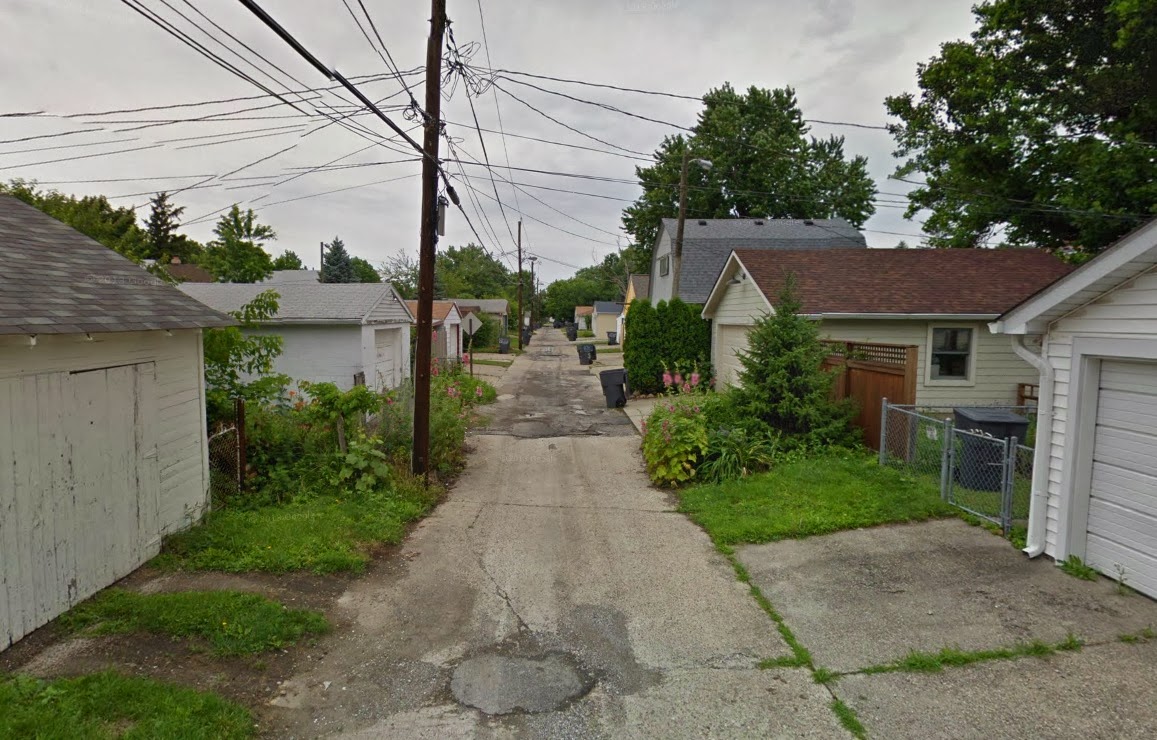 |
| New Matamoros rowhouses. (Google Maps). |
Although one might expect this lack of financing to impair individual property ownership, a surprising 80 percent of Mexicans own their own homes. This compares to a rate of only 65 percent in the United States, where 70 percent of homes are encumbered with mortgages and only 1 in 10 buyers pays in cash (at least, until the recent surge in buying by institutional investors). As I pointed out in a previous post, the homeownership rate in the US has actually been more or less stagnant since the mid-1960s in spite of extraordinary efforts to expand the availability of credit.
I think there is something else at work here, though, beyond the influence of two very different lending environments, and it relates back to the modest size of houses observed in Mexican cities. It's been a point often noted that the average size of new American homes has been steadily increasing since 1950 even as household sizes have fallen. Home sizes and household sizes have diverged so sharply, in fact, that a major structural mismatch has emerged throughout the US housing market, as shown below (charting percentages of all US housing units and all US households):
 |
| Data from 2012 ACS three-year estimates. |
 |
| Data from 2012 ACS five-year estimates. |
| Data from 2012 ACS five-year estimates. |
To what extent these patterns are an expression of consumer preferences, market forces, financial and tax incentives and/or land use restrictions (such as minimum lot or square footage restrictions) is unclear, although there is evidence that square footage restrictions generally seem to have appeared at around the same time as smaller homes ceased being built in large numbers and to have increased in restrictiveness thereafter.* Very small houses, and very small lots, have in typical American zoning fashion been segregated and stigmatized in so-called trailer parks (note that Matamoros, despite being poorer than any American city, apparently has no trailer parks).
 |
| Tiny House movement circa 1921: "Just the thing for two people!" |
Whatever the explanation, the effect must be to impede further increases in homeownership. As the country has undergone a long-term reduction in household size, the market has produced fewer and fewer for-sale options sized for small households. The options that remain are not ideal. One can either buy a home that is far larger and more expensive than one needs or enter a competitive rental market for legally restricted multifamily supply (large swaths of American cities, due to restrictive zoning, have few or no apartments for sale at all). An additional option — subverting late 20th century cultural norms* by renting out rooms within a single-family dwelling larger than needed for just one or two occupants — invariably raises the hackles of incumbent homeowners (as seen in the occupancy limit controversy in Austin and many other cities).
These trends have been noted countless times before, in particular by Christopher Leinberger, while Nathan Lewis has been adamant about the need for an increase in production of much smaller homes (including multifamily construction) and, just as importantly, the availability of much smaller building lots. Americans seem to have some difficulty conceptualizing separately-owned very small homes on small lots, though, and even when structures of this size are recognized as meeting an important market need, they are typically imagined as mere accessories to "proper" single family homes, not least by the New Urbanists themselves. Still, that is an approach that tries make something better out of the traditional American pattern of building a series of small houses (on their own separate street network!) just for cars to live in:
 |
| Indianapolis residential alley with garages, origin ca. 1920s. (Google Maps). |
What would be a reasonable price goal, within the context of the dominant single-family detached form, for housing cost using both small homes and small lots? Nathan, in his writings on this subject, aims for $50,000, which, when adjusted for higher American incomes, would be roughly comparable to the greenfield homes of Matamoros. Nick Derome estimated $170,000 for very small-lot homes in surburban Toronto in comments on the previous post. For even the highest cost towns in Fairfield County, Connecticut, based on land prices, 1,000 sq. ft. homes of less than $200,000 appear financially (if not politically) feasible. Going almost anywhere else from such a high cost location, prices should drop significantly.
--------------------------------
Related posts: It turns out I'm not the first to connect Tiny Houses and Mexican urbanism -- an American homebuyer in the Mexican city of Merida linked the two on his blog here. Also, Life Edited opines on Why Household Size Matter and Why Are American Homes So Big?
*In striking down a Connecticut town's law fixing the minimum home size at 1,300 square feet (under challenge by a builder attempting to construct a 1,000 sq. ft. modular home), the Connecticut Supreme Court noted "the significant increase of the minimum floor area requirements over the years since 1955 when [the town] had its first regulation controlling minimum floor area requirements. At that time, the minimum floor area requirements were only 750 square feet for a one-story house... ." Builders Service Corporation v. Planning & Zoning Commission (1988). Similar New Jersey ordinances dated as early as 1949.
*Consider the connotations of the very term "single-family dwelling" and what it implies about the identity of the inhabitants of such a dwelling. However, such creative use of single-family dwellings used to be very common, legal and accepted as more or less ordinary (for an example, browse the appendix of the 1950 Housing Census, which describes a bewildering array of housing arrangements within a single home that enumerators might encounter).
